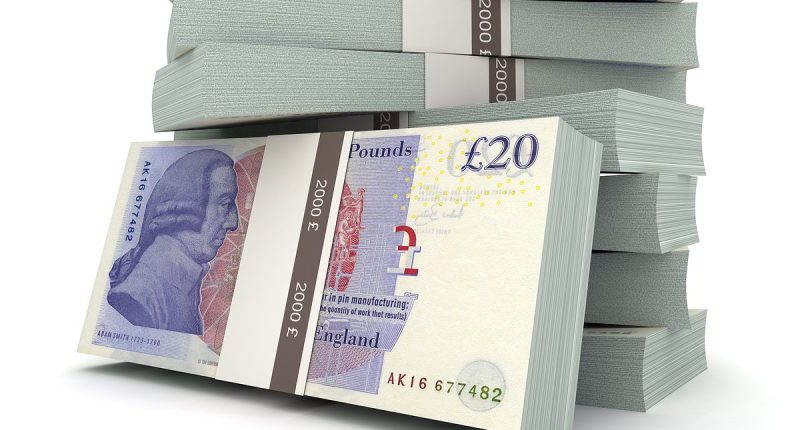Share this @internewscast.com
If there’s one thing that’s guaranteed to gnaw away at your wealth, it’s fees on the funds you invest in.
Managers take a slice of your investments every year – and the more they take, the less there is left for you.
The impact can be dramatic.
If you put £10,000 in a fund that earned 6 per cent a year, you would be sitting on £38,131 after 25 years if the annual fees were 0.5 per cent. But if fees were 1 per cent you’d have just £33,865, and if they were 2 per cent you’d have £26,662 – and would have paid £16,250 in fees.
So why would you ever pay fees for a fund that are several times higher than others that hold investments in the same sector?
We investigated if it’s ever worth paying for the most expensive funds available.

Taking a slice of your cash: If there’s one thing that’s guaranteed to gnaw away at your wealth, it’s fees on the funds you invest in
What is expensive?
Fierce competition and regulatory pressure have forced down fees over the past decade to ensure that investors get a better deal.
Actively managed investment funds – those curated by an expert – now charge an annual fee of 0.89 per cent on average, according to regulator the Financial Conduct Authority.
Passive funds that follow an index instead of relying on experts are cheaper still – sometimes as low as 0.1 per cent a year.
But research for Wealth & Personal Finance reveals there are still 255 funds that charge 1.5 per cent or higher.
Their annual charge is a hefty 1.69 per cent on average, compared with the average across their rivals of 0.66 per cent.
For every penny more an investor pays in charges, the manager must produce greater returns to outperform the market. Analysis of the funds by research firm Morningstar shows they don’t always manage it – but some do.
Some 17 of the 255 dearest funds were in the bottom 10 per cent (decile) of performers in their fund sector over one, three and five years. A further 10 were in the bottom decile for two out of three of these time periods.
But several funds have consistently outperformed. Eight funds were in the top decile of their sector in all three time periods, and a further seven were top in two out of three of the periods.
The Artemis UK Select fund, for example, charges 1.55 per cent compared to an average charge of 0.4 per cent across the UK All Companies sector.
It is a top performer over all three time periods and has delivered annualised returns of 19.5 per cent over five years.
The Schroder Income fund charges 1.64 per cent, more than double the 0.8 per cent average for its peer group. Over five years it has produced annualised returns of 15.3 per cent, putting it in the top decile of its sector.
Ben Yearsley from fund experts Fairview Investing says: ‘There is an unhealthy obsession with fees, but the fact is there is no real correlation between charges and performance. If you can deliver consistently after fees, regardless of what the market is doing, then does it matter what the fee is?’
When it is worth paying more
Darius McDermott, from ratings agency Fund Calibre, says: ‘No one should say that charges don’t matter, because they do, but the more important question is: did you pick the right fund? Because the right fund will still outperform, even if it is more expensive.’
The first check to decide if it is worth paying for an expensive fund is to compare it to similar ones. If you can find another fund doing the same thing for much less, consider switching.
Take a look at the annual performance after fees. If the performance is higher even when fees are factored in, it may be worth the money.
Also check how much money is invested in the fund – a statistic known as the assets under management (AUM). This information should be easily available in the fund’s key investor information document.
Smaller funds are sometimes justified in charging more because many of the running costs are fixed, such as the authorisation and legal costs. However, as the fund grows they should pass on the savings, says Yearsley.
‘Funds should be passing on the economies of scale as they grow – a £20 billion fund charging 2 per cent would be hard to justify,’ he adds.
Funds in specialist areas, such as property or infrastructure, may also have higher costs, which are passed on to investors.
When checking how well a fund is doing, Yearsley recommends that you should look at the performance across individual years, rather than cumulative figures across several.
‘This will help you see a pattern: whether the fund is routinely under- or over-performing, rather than having one very good or bad year that has distorted the overall picture,’ he says. These figures can be found on the fund factsheet or through investment platforms and fund research websites.

…and when to switch
Paying more does not always get you more – you may be able to invest in the same fund for cheaper simply by switching share ‘class’.
Some funds have several share classes, which are the same except for their price.
Older, so-called ‘legacy’ share classes, tend to be more expensive because they were created before regulation forced fund managers to strip out commission fees and other excess charges from the cost of investing.
Ask your investment platform or contact the fund firm if you are not sure if a cheaper version is available.
McDermott points to the Jupiter India fund as one example.
It is a top-performing fund, but investors in its most expensive L share class have seen returns of 166 per cent over five years, while those in its cheapest X share class enjoyed 180 per cent returns.
‘Even the most expensive share class has beaten the market, but it does still affect your returns,’ says McDermott. ‘The greater the performance, the bigger the impact of the charges.’
So how do funds justify their higher fees?
Toby Gibb, head of investment solutions at fund house Artemis, says it is doing its best to encourage investors out of more expensive share classes and that most were now in cheaper versions.
He adds: ‘If managers are to do better than the market, they must conduct huge amounts of research, and often need specialist external research too. We think the long-term performance of these funds demonstrates that that’s worth paying for.’
A Schroders spokesman says: ‘Our goal is to ensure that clients are invested in the share class that provides the best value based on their investment approach.
‘We conduct a semi-annual automatic conversion to cheaper share classes for investors that have had their adviser removed.’
Jupiter has been approached for comment.
How to work out what you’re paying
Check the fund factsheet. This should list the annual management charge (AMC), which is displayed as a percentage.
It might also be called the ongoing charge figure (OCF) or total expense ratio (TER).
Check which share class you are in. Some investment platforms offer cheaper share classes, so you will need to check with your platform exactly what you’re paying.
Don’t forget other fees. Remember the fund charge is on top of your platform fee, so factor this into calculations when considering the overall cost of investing.
DIY INVESTING PLATFORMS
AJ Bell

AJ Bell
Easy investing and ready-made portfolios
Hargreaves Lansdown

Hargreaves Lansdown
Free fund dealing and investment ideas
interactive investor

interactive investor
Flat-fee investing from £4.99 per month
InvestEngine

InvestEngine
Account and trading fee-free ETF investing
Trading 212
Trading 212
Free share dealing and no account fee
Affiliate links: If you take out a product This is Money may earn a commission. These deals are chosen by our editorial team, as we think they are worth highlighting. This does not affect our editorial independence.
Compare the best investing account for you









